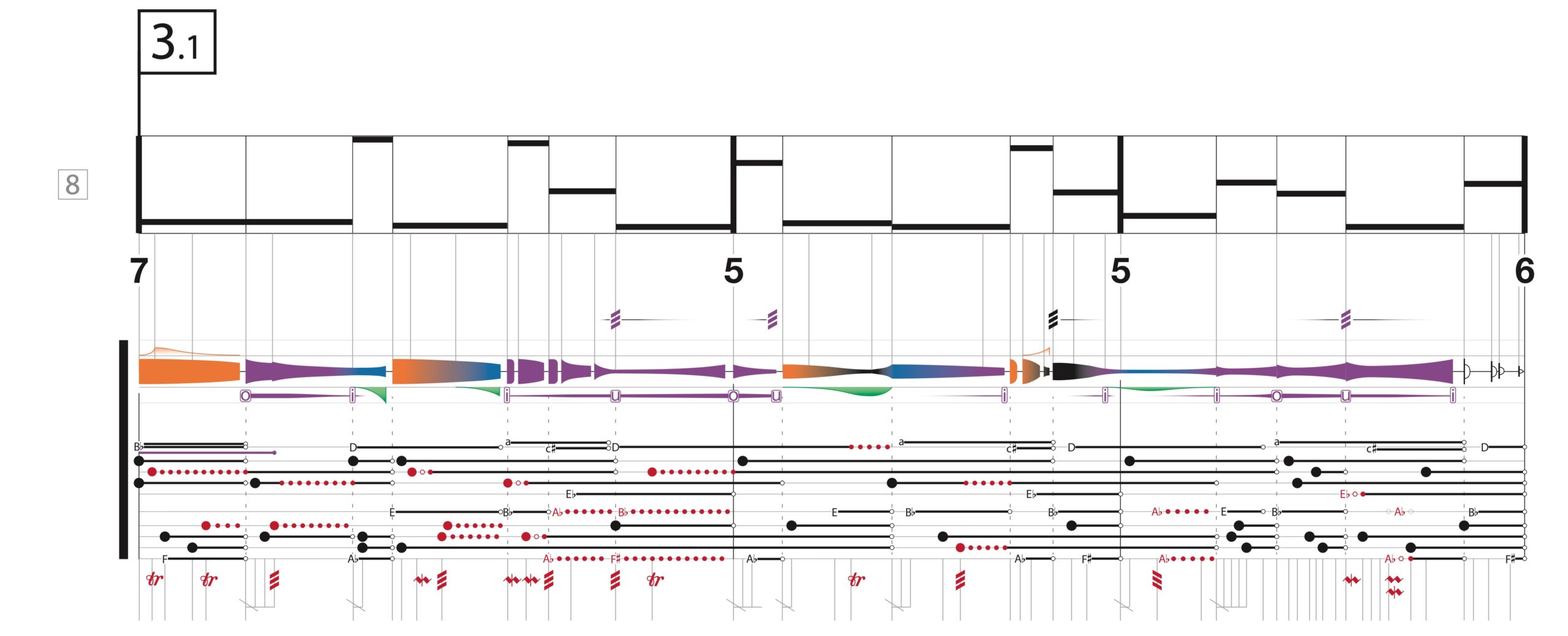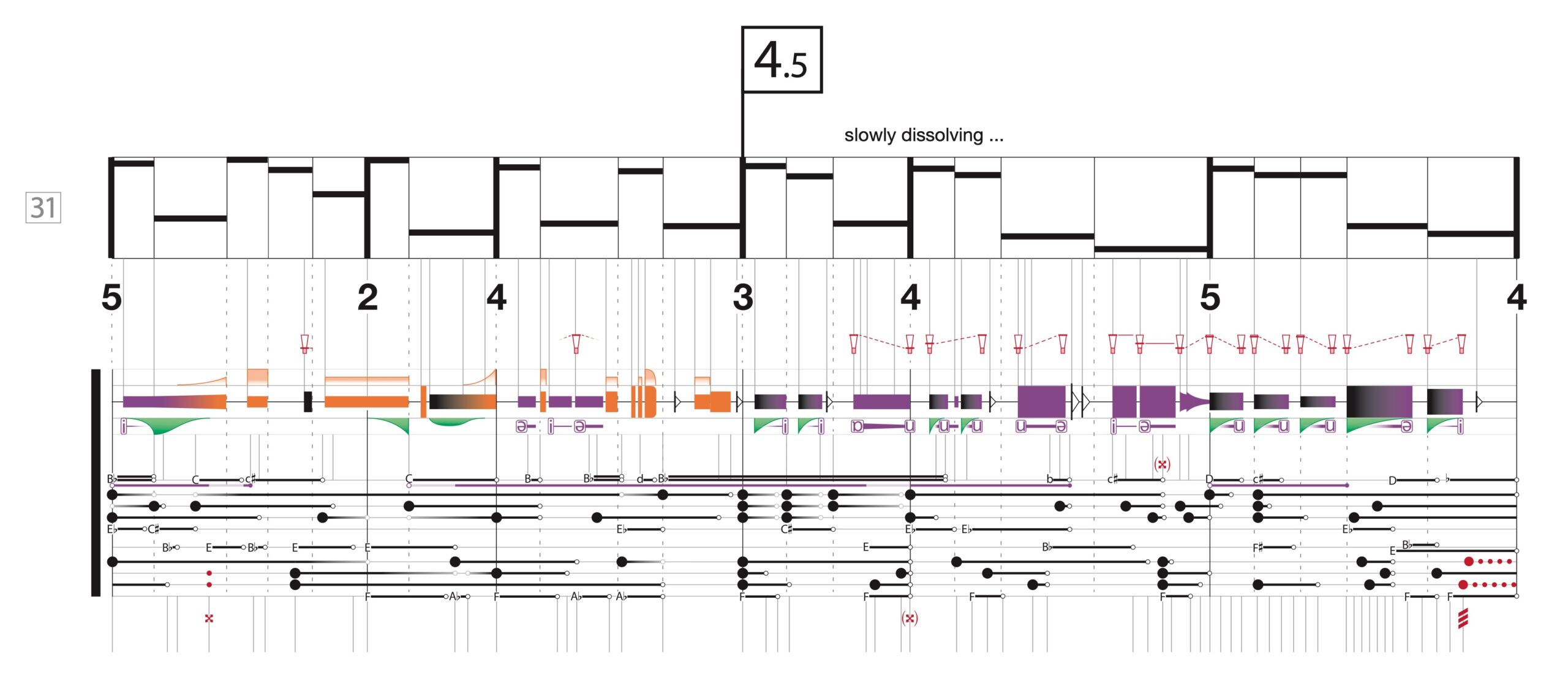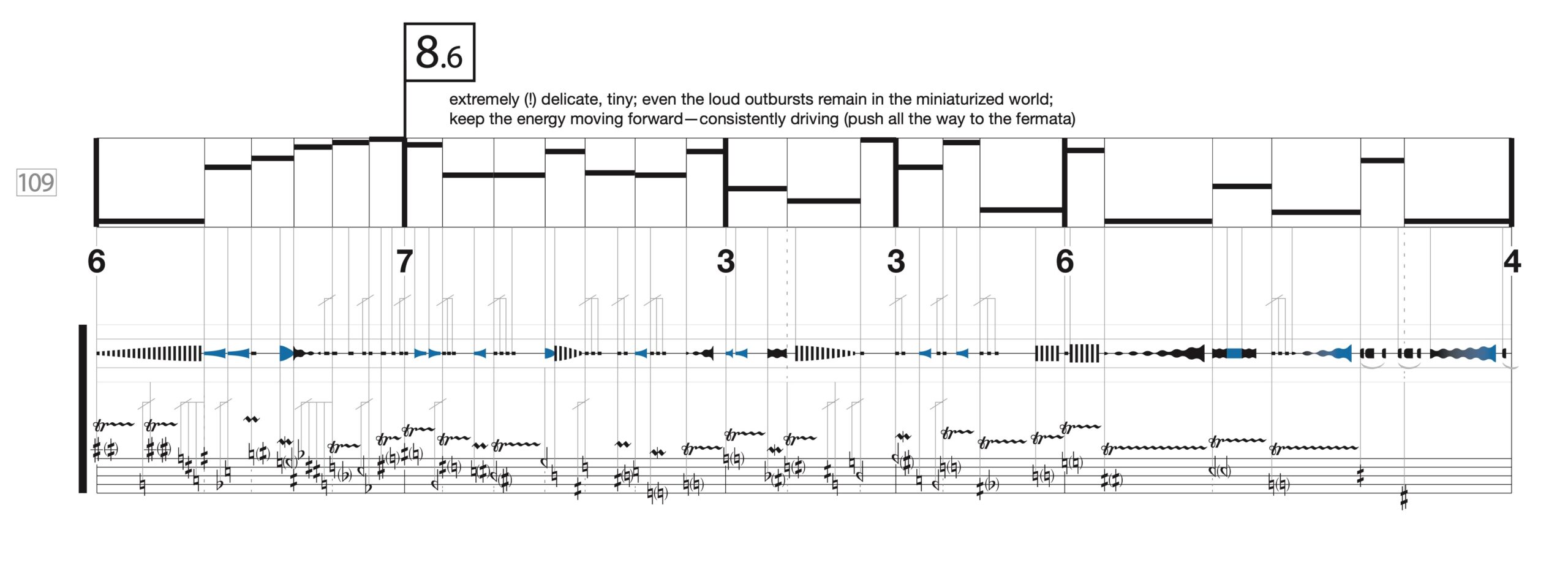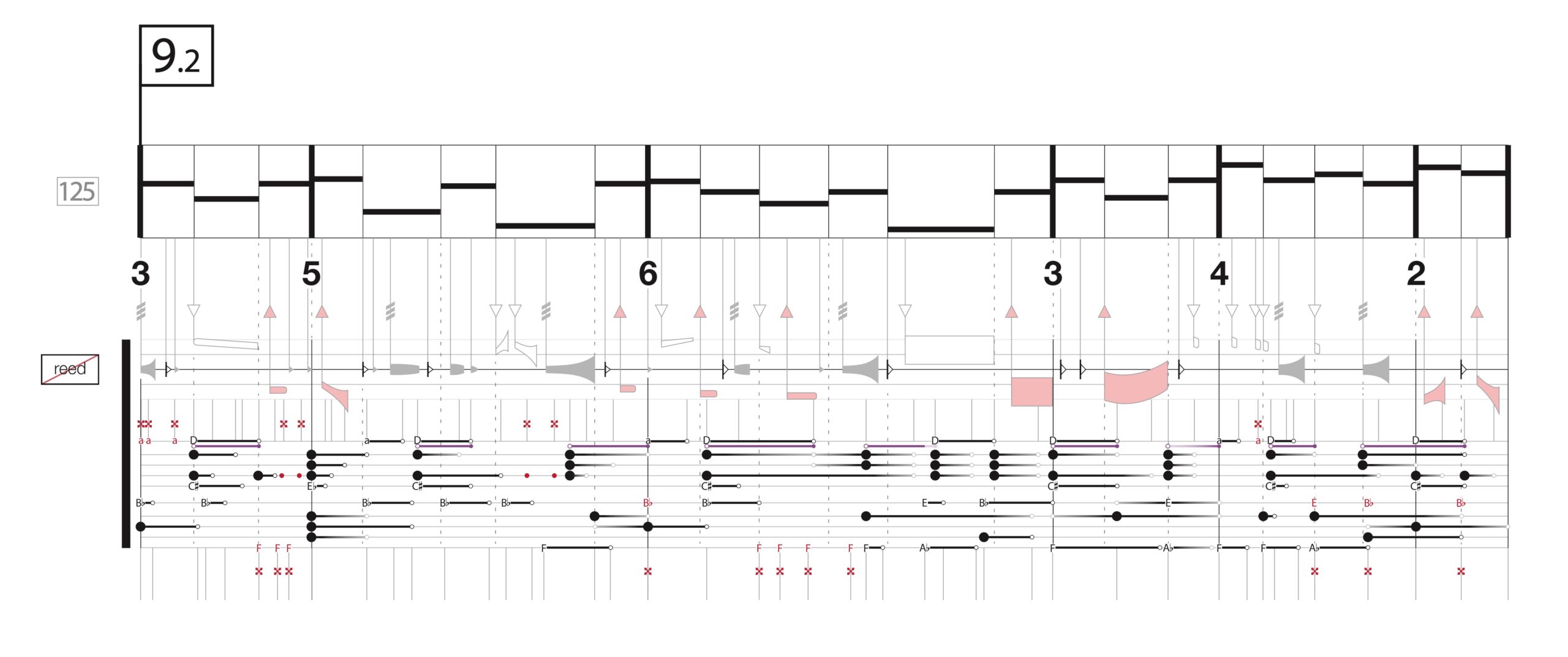Description
instrumentation: bassoon
date: 2025
duration: 10’00
details: 12 pages, including performance instructions; A3 portrait, full colour
Programme Note
25. April ’05 is a companion piece to 27. Juni 2009 (2021) for solo E-flat clarinet, both based on small overpainted photographs by the artist Gerhard Richter. As with the pair of quartets that comprise the set A way of making ghosts (2018–20), also based on a pair of paintings by Richter—in that case two wildly different self-portraits—this work exists as a mirror image of its partner, a second, alternative, contradictory attempt at working through a similar set of issues, ideas, uncertainties, provocations …
25. April ’05 (Richter’s titles are simply the date of execution) is a vastly different image than 27. Juni 2009. It is … curious. Possibly funny. Possibly joyful and playful. Possibly disquieting, even menacing. It is also somehow, in its simplicity, an image about family, aging, love, life and loss, inevitability, renewal, a leap into the unknown. On the left of the image, an older man—possibly Richter himself—is pushing a wheelbarrow along a small paved path, within which are seated two young children—grandchildren, one can assume—one of whom is clearly laughing, shrieking with joy, excitement and adventure, his feet dangling out front over the wheel. On the right side of the image, covering at least two-thirds of the photographic ‘canvas’, is a thick, dense, brown-green-grey wall, a river of gloppy paint, pulled and smeared and … really kind of ugly, actually. The paint thins out just enough near the right margin of the image to reveal that the photo’s grass and trees still continue underneath, but … otherwise, the vast majority of the photo to the right of the boy’s foot is not just masked but obliterated. It is a void, violently erased from existence.
The two portions of the image—the casual, personal, anecdotal, lighthearted snapshot on the left; the unforgiving, impersonal, impenetrable mass of paint on the right—are incongruous, and even confusing in their juxtaposition. What I like, though, is two underlying phenomena present in this tension: First, despite their obvious stasis (a photograph, some dried paint), both sides of the image have a highly energized sense of movement. The whole image seems to fly off the page, all of its energy sweeping inexorably to the right. But the two sides of the image also somehow collide, slamming into one another with with a similarly inevitable force. Unlike most of Richter’s overpainted photographs, here the sense of layering, of superimposition, of glossing, is somehow missing. Here, the two portions of the image seem to battle for the same space. And this is the second element that I find particularly enticing—this sense of opposition, of duality, of incongruity, somehow hovers magnetically. I find my eyes darting back and forth, my brain somehow struggling to keep these two opposing realities simultaneously true. Each portion of the image maintains its own completely independent collection of materials, scale/shape, depth/perspective/flatness, emotion … but, particularly if one looks at the image from a bit of a distance, both sides simultaneously appear like they could be portals into the other’s reality. The energy of one somehow leaps into the other. Looked at long enough, it’s not even particularly clear which of the two sides is on top of the other—there’s a slightly darker, thicker band on the left edge of the pulled, painted section that plays a little optical illusion, at least to my eyes, sometimes looking like it’s the beginning of a layer above the photo, and sometimes looking like the photo has melted into a painted space below.
This new solo for bassoon is entangled in all of these thoughts. As with its E-flat clarinet companion, I’ve been experimenting quite a lot recently with new formal strategies, focusing on eliminating vertical ‘layering’ and horizontal segmentation, and working instead towards a hovering, liquid, multidimensional musical form in which a sense of multiplicity (of energies, behaviors, tendencies, sweeping dancelike movements) and fluidity (of foreground, background, structure, surface, mechanism, material) remain entangled, endlessly evaporating, recombining, coalescing, distending, careening, their speeds shifting through various independent states of viscosity and elasticity. But … the content of the photo is present here, too. Family and aging, fear and joy, the brave, sad simultaneity of glee and nothing.
25. April ’05 was commissioned by James Aylward, and was supported as part of James’s research project exploring the development of new bassoon techniques at the Western Australian Academy of Performing Arts (WAAPA) at Edith Cowan University.

Composition is a side issue. Its role in my selection of photographs is a negative one at best. By which I mean that the fascination of a photograph is not in its eccentric composition but in what it has to say: its information content. And, on the other hand, composition always also has its own fortuitous rightness.
—Gerhard Richter “Notes”, 1964











